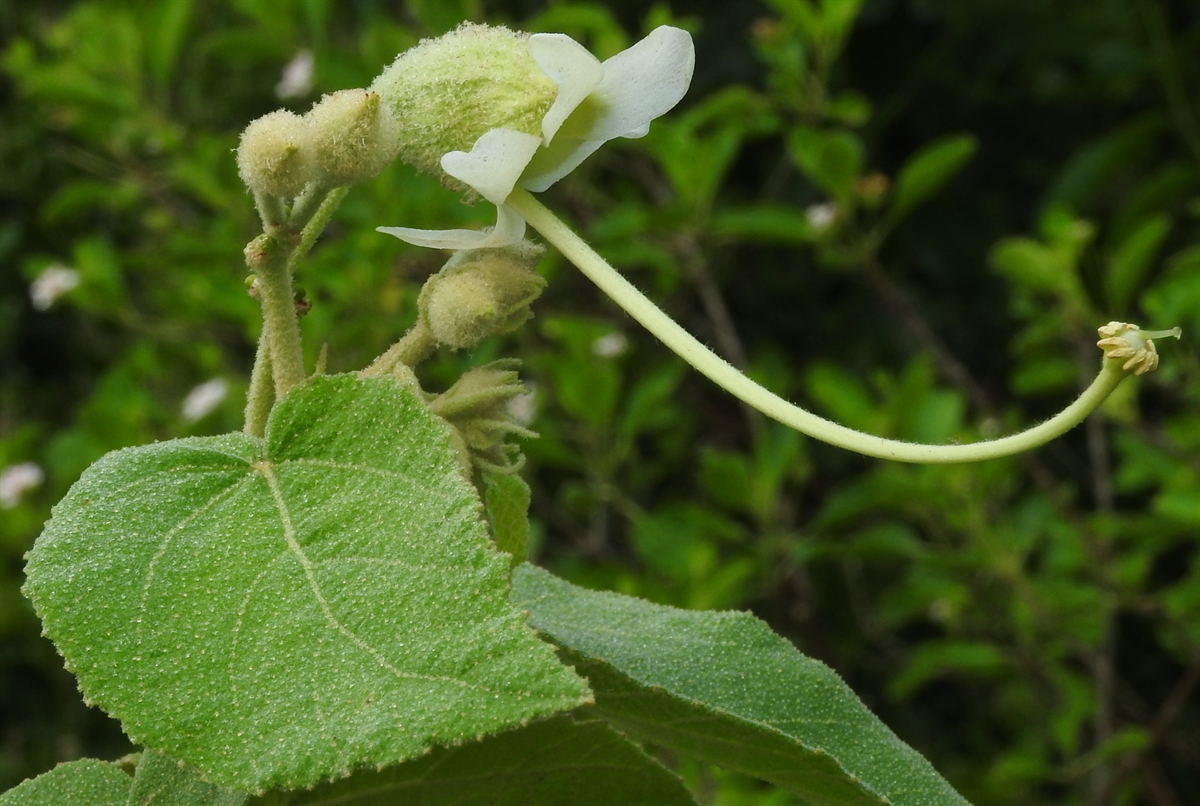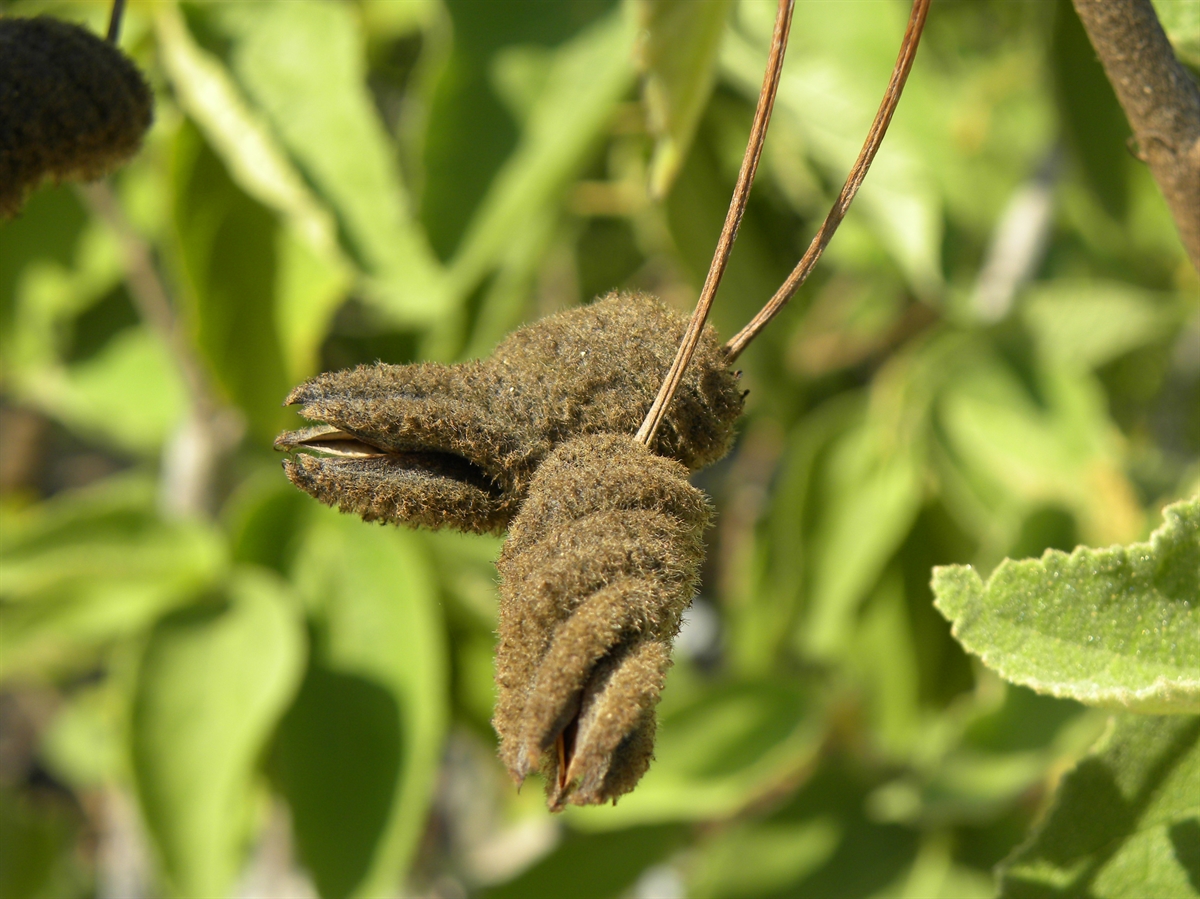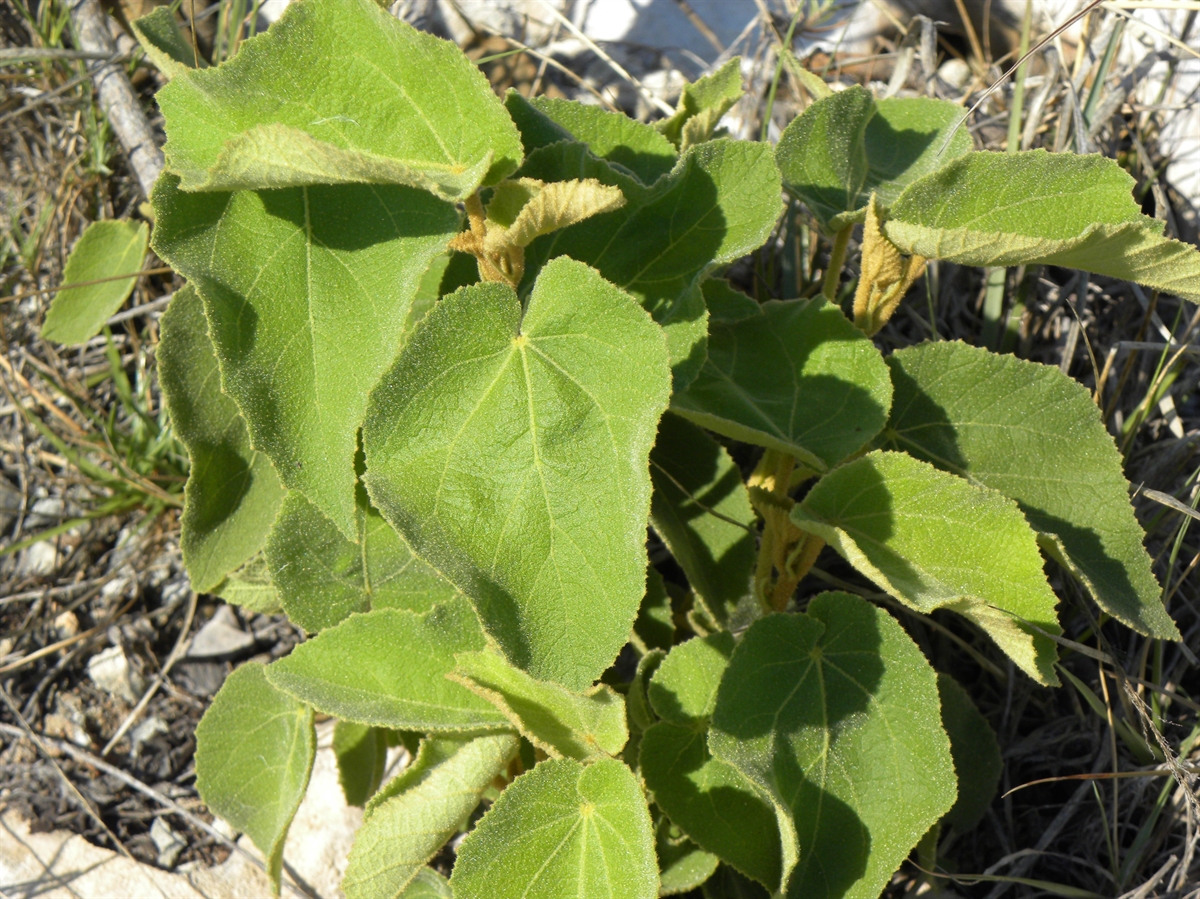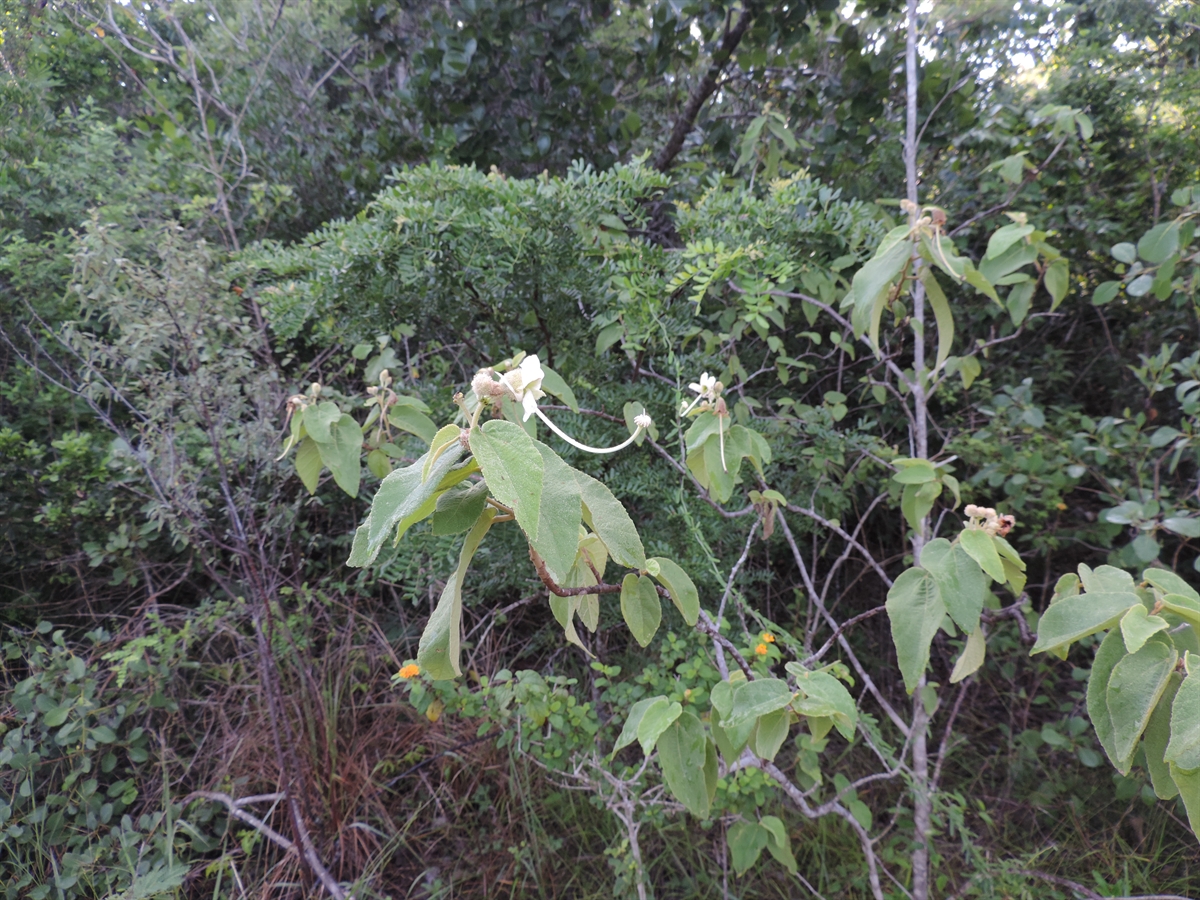Habit: Helicteres jamaicensis grows as a small to medium size shrub-tree to 6 m in height. The pinnate/palmate leaves are arranged alternately, tomentose, to 25 cm (typically smaller) in length, ovate to ovate-lanceolate, with an acuminate leaf apex, cordate base, and dentate leaf margin.
The complete, perfect, zygomorphic flowers are arranged in terminal compound corymbs. The calyx has 5, fused, glandular, green sepals. The corolla has 5, unfused, white petals. There are 10 fused stamens forming a column. The carpel has 5, superior ovaries each with a single locule and numerous seeds. The fruit is a tomentose capsule that twists spirally at maturity.
Habitat: Helicteres jamaicensis grows in Dry Broadleaf Evergreen Formation-Forest/Woodland/Shrubland (coppice, scrublands).
Distribution: Helicteres jamaicensis occurs on all island groupings in the Lucayan Archipelago as well as the broader Caribbean region.
Medicinal/Cultural/Economic usage: Helicteres jamaicensis is used medicinally in The Bahamas in general strengthening teas and for gastrointestinal problems. The leaves are used to clean hands after cleaning fish and conch.



